Using Telerik® Data Access Project Templates
This article is relevant to entity models that utilize the deprecated Visual Studio integration of Telerik Data Access. The current documentation of the Data Access framework is available here.
Telerik Data Access provides various project templates, allowing you to create new projects based on Telerik Data Access in just few clicks. In this topic, you will learn about the new templates and see what they provide. Telerik Data Access provides the following project templates:
- Web Site Template
- Telerik Data Access Class Library
- Telerik Data Access Fluent Library
- Telerik Data Access MVC2 Application
- Telerik Data Access Web Application
- Telerik Data Access Dynamic Data Application
Telerik Data Access WebSite Template
To make it easier for developers using Web Site projects, Telerik Data Access provides a new template that can be accessed by selecting File -> New -> Web Site in Visual Studio.
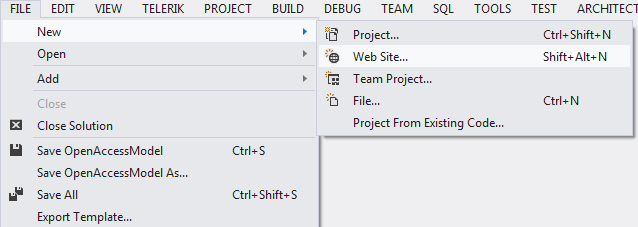
In the list of installed templates, choose Visual C# or Visual Basic. Then, select the Telerik Data Access WebSite template.
The Telerik Data Access WebSite template is available only in Visual Studio 2010 for applications that use .NET version 4.
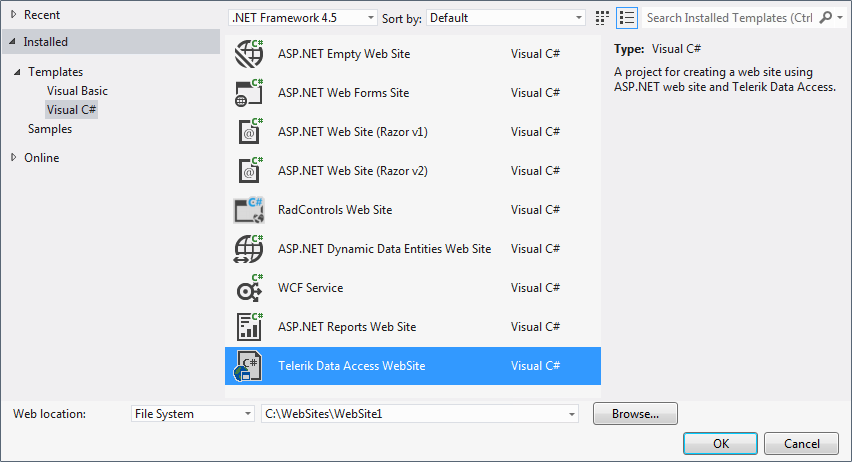
When you select this template, two projects will be created. The first will be a normal web site project, and the other will hold a domain model. The Telerik Data Access New Domain Model Wizard wizard will run, allowing you to configure the domain model. Once configuration is complete, a new RLINQ file will be added to the model project.

Project Templates
Besides the Web Site template, Telerik Data Access provides the following project templates (C# and VB version).

Telerik Data Access Class Library
This template makes it a one step process to get started building a domain model using the Visual Designer. When this project template is used, a new Class Library project will be added to the solution, and the Telerik Data Access New Domain Model Wizard will run. Once the domain model is configured, a new RLINQ file will be added to the project.
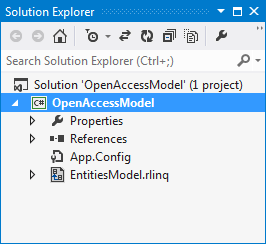
Telerik Data Access Fluent Library
This template is for the code-first developers. It will add a new project to the solution and it will run the Create New Model Wizard. This template works in the same way as the Telerik Data Access Class Library project template. However, it will create a new model (from an existing database or an empty one) by using the fluent mapping code generation. Below is a sample output of the Telerik Data Access Fluent Library project template. The generated project will contain an OpenAccessContext implementation (this is the FluentModel class), a FluentMappingSource implementation (this is the FluentModelMetadataSource class), and model classes that correspond to the underlying database tables. For more information about the Fluent Mapping API, please refer to Code-Only Mapping.

Telerik Data Access MVC2 Application
With this template, two projects will be added to the solution. The first will be an ASP.NET MVC 2 application, and the second will be a fluent mapping project set up the same as the Telerik Data Access Fluent Library project template.
The Telerik Data Access MVC2 Application template is available only in Visual Studio 2010 for applications that use .NET version 4.
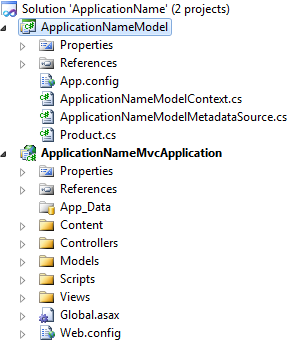
Telerik Data Access Web Application
This project type will create a new ASP.NET AJAX web application, and open the Telerik Data Access New Domain Model Wizard. Once you run through the wizard, the new domain model will be added to the web project.
The Telerik Data Access Web Application template is available only in Visual Studio 2010 and Visual Studio 2012 for applications that use .NET version 4/4.5.
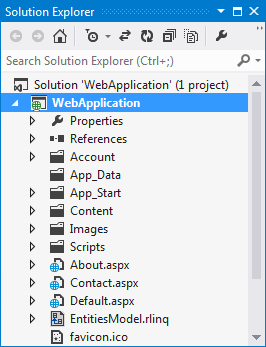
Telerik Data Access Dynamic Data Application
This project type will create a new ASP.NET AJAX web application that uses ASP.NET Dynamic Data, and open the Telerik Data Access New Domain Model Wizard. Once you run through the wizard, the domain model will be added to a new class library project.
The Telerik Data Access Dynamic Data Application template is available only in Visual Studio 2010 and Visual Studio 2012 for applications that use .NET version 4/4.5.

